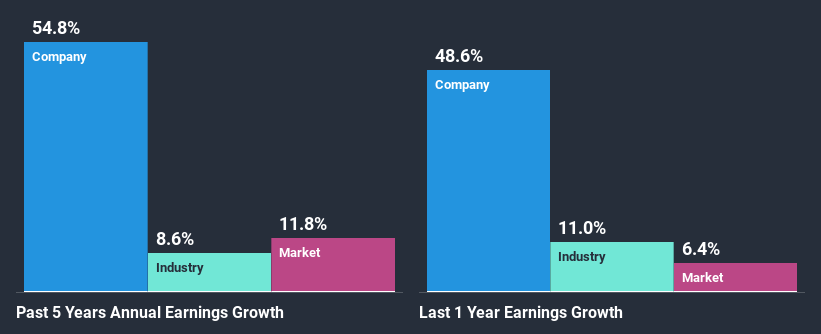Could The Market Be Wrong About Algonquin Power & Utilities Corp. (TSE:AQN) Given Its Attractive Financial Prospects?
It is hard to get excited after looking at Algonquin Power & Utilities' (TSE:AQN) recent performance, when its stock has declined 11% over the past month. But if you pay close attention, you might gather that its strong financials could mean that the stock could potentially see an increase in value in the long-term, given how markets usually reward companies with good financial health. In this article, we decided to focus on Algonquin Power & Utilities' ROE.
Return on equity or ROE is an important factor to be considered by a shareholder because it tells them how effectively their capital is being reinvested. Simply put, it is used to assess the profitability of a company in relation to its equity capital.
Check out our latest analysis for Algonquin Power & Utilities
How Is ROE Calculated?
The formula for return on equity is:
Return on Equity = Net Profit (from continuing operations) ÷ Shareholders' Equity
So, based on the above formula, the ROE for Algonquin Power & Utilities is:
12% = US$728m ÷ US$6.0b (Based on the trailing twelve months to December 2020).
The 'return' is the amount earned after tax over the last twelve months. One way to conceptualize this is that for each CA$1 of shareholders' capital it has, the company made CA$0.12 in profit.
What Is The Relationship Between ROE And Earnings Growth?
So far, we've learned that ROE is a measure of a company's profitability. Based on how much of its profits the company chooses to reinvest or "retain", we are then able to evaluate a company's future ability to generate profits. Generally speaking, other things being equal, firms with a high return on equity and profit retention, have a higher growth rate than firms that don’t share these attributes.
Algonquin Power & Utilities' Earnings Growth And 12% ROE
To start with, Algonquin Power & Utilities' ROE looks acceptable. On comparing with the average industry ROE of 9.0% the company's ROE looks pretty remarkable. This probably laid the ground for Algonquin Power & Utilities' significant 55% net income growth seen over the past five years. We reckon that there could also be other factors at play here. Such as - high earnings retention or an efficient management in place.
Next, on comparing with the industry net income growth, we found that Algonquin Power & Utilities' growth is quite high when compared to the industry average growth of 7.6% in the same period, which is great to see.
Earnings growth is an important metric to consider when valuing a stock. What investors need to determine next is if the expected earnings growth, or the lack of it, is already built into the share price. This then helps them determine if the stock is placed for a bright or bleak future. Is AQN fairly valued? This infographic on the company's intrinsic value has everything you need to know.
Is Algonquin Power & Utilities Efficiently Re-investing Its Profits?
The high three-year median payout ratio of 75% (implying that it keeps only 25% of profits) for Algonquin Power & Utilities suggests that the company's growth wasn't really hampered despite it returning most of the earnings to its shareholders.
Additionally, Algonquin Power & Utilities has paid dividends over a period of at least ten years which means that the company is pretty serious about sharing its profits with shareholders. Upon studying the latest analysts' consensus data, we found that the company is expected to keep paying out approximately 85% of its profits over the next three years. However, Algonquin Power & Utilities' future ROE is expected to decline to 9.1% despite there being not much change anticipated in the company's payout ratio.
Conclusion
On the whole, we feel that Algonquin Power & Utilities' performance has been quite good. We are particularly impressed by the considerable earnings growth posted by the company, which was likely backed by its high ROE. While the company is paying out most of its earnings as dividends, it has been able to grow its earnings in spite of it, so that's probably a good sign. That being so, according to the latest industry analyst forecasts, the company's earnings are expected to shrink in the future. To know more about the latest analysts predictions for the company, check out this visualization of analyst forecasts for the company.
This article by Simply Wall St is general in nature. It does not constitute a recommendation to buy or sell any stock, and does not take account of your objectives, or your financial situation. We aim to bring you long-term focused analysis driven by fundamental data. Note that our analysis may not factor in the latest price-sensitive company announcements or qualitative material. Simply Wall St has no position in any stocks mentioned.
Have feedback on this article? Concerned about the content? Get in touch with us directly. Alternatively, email editorial-team (at) simplywallst.com.

 Yahoo Finance
Yahoo Finance 
